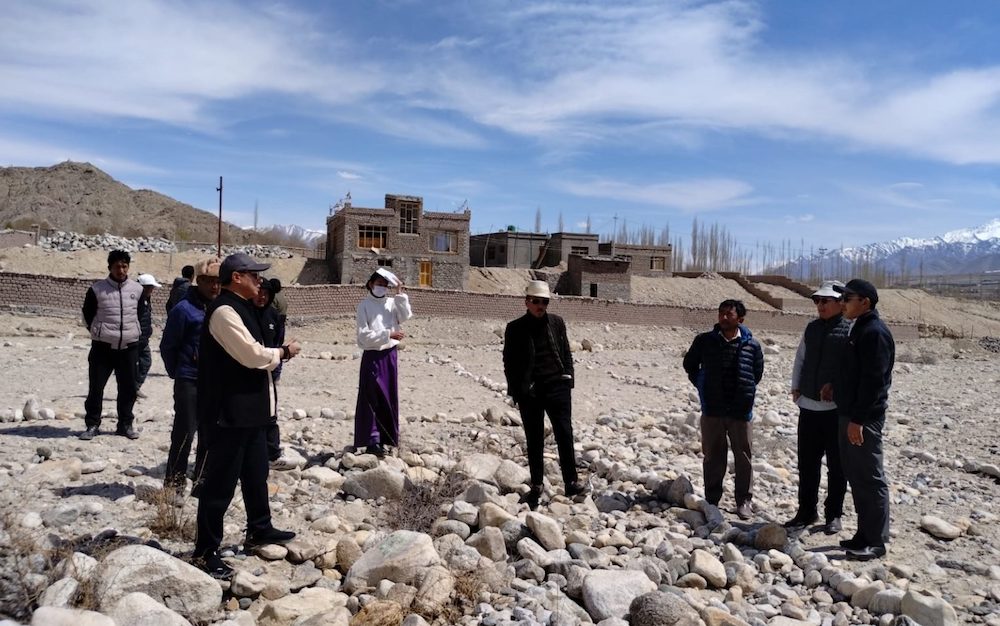By Xu Yihe
SINGAPORE – China has discovered hydrocarbon reserves totaling 13 billion metric tons of oil and gas equivalent in Tibet, paving the way for development of oil and gas resources there, a China-based industry official said.
Recent geological surveys conducted by Chengdu Mineral Resources Research Institute, based in Sichuan province, show there are seven oil and gas bearing structures at Qiangtang basin, 200 kilometers north of Lhasa, the region’s capital, an institute official told Dow Jones Newswires Monday.
Of the total reserves, 3.8 billion tons are crude oil and the rest is natural gas, he said.
China Petroleum & Chemical Corp. (SNP), or Sinopec, is expected to start seismic survey at the basin in October, he said.
Sinopec had planned to start the seismic survey in June, but was delayed due to the outbreak of the SARS virus.
The official, who declined to be named, said Sinopec plans to drill 2-3 exploration wells at the basin next year, to narrow down the blocks most suitable for development.
It will cost about 70 million yuan ($1=CNY8.28) to drill one well at Qiangtang, the world’s highest basin, which stands about 5,000 kilometers above sea level, he said.
The oil reserves are heavy, and rich in bitumen, he said.
China made its first oil and gas discovery in Tibet in 1999, when Sinopec Star Petroleum Co., a unit of Sinopec, made a major discovery at Tibet’s Luenpola basin. An appraisal well at the basin, Lunqian 3, flowed an average of 214 barrels of oil a day during drilling July 9-12.
A month later, Sinopec Star made another oil discovery at the same basin, leading the company to conclude that the Luenpola basin could contain up to 150 million tons of geological reserves. Sinopec hasn’t yet started to develop the Leunpola basin, the official said without elaborating.
Beijing-based oil experts said Sinopec needs to solve logistics problems before starting oil and gas development in Tibet due to the high altitude.
The Chengdu official said Sinopec is very likely to build a gas pipeline in Tibet to connect with a 3,900-kilometer trunk line linking oil reserves in western China’s Xinjiang region and the gas markets in the east.
The trunk line is under construction by PetroChina Co. (PTR) and three foreign companies including Royal Dutch/Shell Group (RD) and is scheduled for completion in October this year.
“It is easy for gas to flow from higher terrain to lower,” he said.
Experts said Sinopec is likely to use the oil it discovers in Tibet locally and blend it into bitumen for road construction.
Sinopec Star began searching for oil in northern Tibet 12 years ago, under what the company calls harsh natural conditions, with the oxygen content in the air at only 52% of the normal level.
China National Petroleum Corp., China’s largest oil company, gave up exploration in northern Tibet in 1996 after failing to make any discoveries despite spending CNY400 million on geological surveys.
Tibet gets its oil products supplies from northwest China’s Qinghai and Gansu province through a 1,080-kilometer pipeline running from Golmud in Qinghai to Lhasa.
Oil and gas development could spur international concerns due primarily due to the fact that Tibet is touted by many as China’s political and religious hotbed and also because of possible damage to environment and ecology.
Xu Yihe, Dow Jones Newswires; 65-6415-4068; yi-he.xu@dowjones.com
Edited by Hilary Mc Cully









